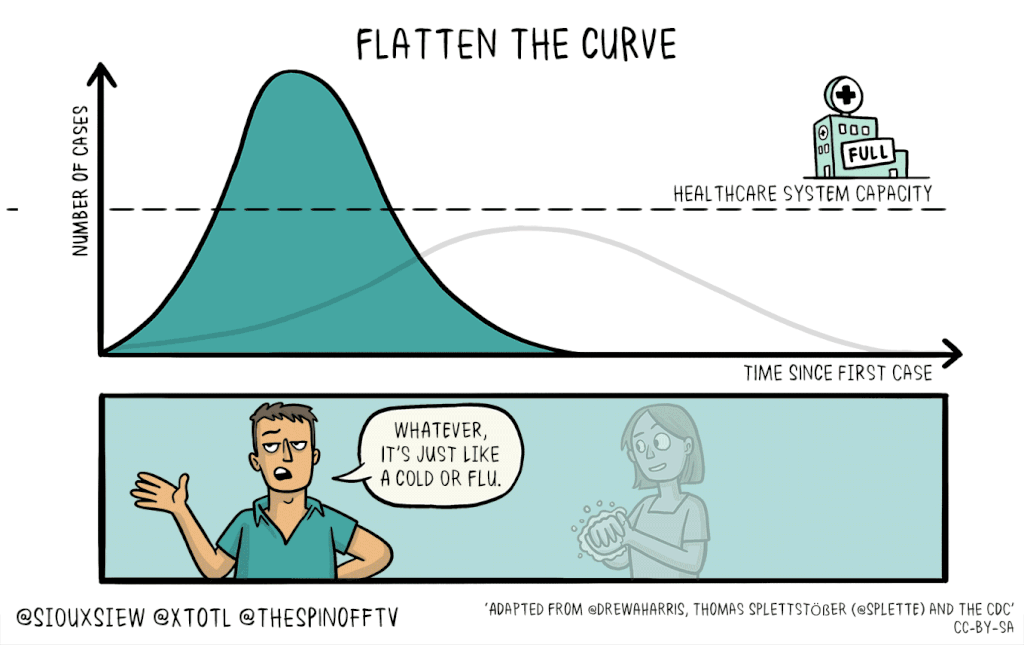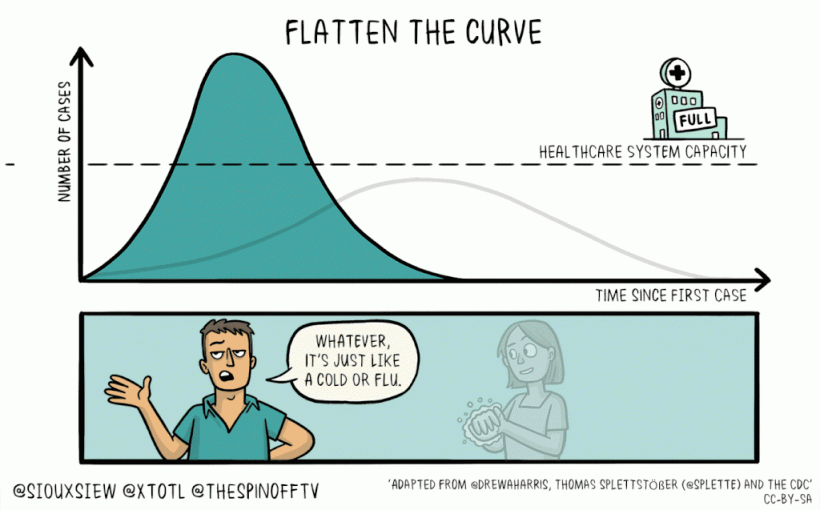
To slow the spread of COVID-19 through U.S. communities, the U.S. Centers for Disease Control and Prevention has encouraged Americans to practice “social distancing” measures. But what is social distancing, and how is it practiced?
For more information on the latest guidance, the Hub compiled information from the CDC and from Johns Hopkins experts Caitlin Rivers, an epidemiologist from the Johns Hopkins Center for Health Security, and Tom Inglesby, the center’s director. Here’s what they had to say.
What is social distancing?
Social distancing is a public health practice that aims to prevent sick people from coming in close contact with healthy people in order to reduce opportunities for disease transmission. It can include large-scale measures like canceling group events or closing public spaces, as well as individual decisions such as avoiding crowds.
With COVID-19, the goal of social distancing right now is to slow down the outbreak in order to reduce the chance of infection among high-risk populations and to reduce the burden on health care systems and workers. Experts describe this as “flattening the curve,” which generally refers to the potential success of social distancing measures to prevent surges in illness that could overwhelm health care systems.
“The goal of social distancing in the U.S. should be to lower the pace and extent of spread of COVID-19 in any given city or community,” Inglesby wrote recently on Twitter. “If that can happen, then there will be less people with disease, and less people needing hospitalization and ventilators at any one time.”
How do I practice social distancing?
The CDC defines social distancing as it applies to COVID-19 as “remaining out of congregrate settings, avoiding mass gatherings, and maintaining distance (approximately 6 feet or 2 meters) from others when possible.”
This means, says Rivers, “no hugs, no handshakes.”
It’s particularly important—and perhaps obvious—to maintain that same 6-foot distance from anyone who is demonstrating signs of illness, including coughing, sneezing, or fever.
Along with physical distance, proper hand-washing is important for protecting not only yourself but others around you—because the virus can be spread even without symptoms.
“Don’t wait for evidence that there’s circulation [of COVID-19] in your community,” says Rivers. “Go ahead and step up that hand-washing right now because it really does help to reduce transmission.”
She recommends washing hands any time you enter from indoors to outdoors, before you eat, and before you spend time with people who are more vulnerable to the effects of COVID-19, including older adults and those with serious chronic medical conditions.
On the broader scale, a number of actions taken in recent days are designed to encourage social distancing, including:
- Schools, colleges, and universities suspending in-person classes and converting to remote online instruction
- Cities canceling events, including sporting events, festivals, and parades
- Workplaces encouraging or mandating flexible work options, including telecommuting
- Organizations and businesses canceling large gatherings, including conferences
- Houses of worship suspending services
“Community interventions like event closures play an important role,” Rivers says, “but individual behavior changes are even more important. Individual actions are humble but powerful.”
Does social distancing work?
Experts point to lessons from history that indicate these measures work, including those from the 1918 Spanish influenza pandemic. A 2007 PNAS study found that cities that deployed multiple interventions at an early phase of the pandemic—such as closing schools and banning public gatherings—had significantly lower death rates.
Although Inglesby says the concept has little modern precedent at a large scale, he points to an early study, not yet peer reviewed, showing the different experience of peak coronavirus rates for two Chinese cities. The city of Guangzhou, which implemented disease control measures early into the outbreak, had significantly lower numbers of hospitalizations from COVID-19 on its peak day than the city of Wuhan, which put measures in place a month into the outbreak.
Inglesby says people shouldn’t fret about a “perfect” approach to social distancing: “It’s a big country and we will need partial solutions that fit into different communities. A 75% solution to a social distancing measure may be all that is possible … [which] is a lot better than 0%, or forcing a 100% solution that will fail.”
What are other ways to limit the spread of disease?
Other public health measures could include isolation and quarantine. According to the CDC’s latest guidance:
Isolation refers to the separation of a person or people known or reasonably believed to be infected or contagious from those who are not infected in order to prevent spread of the disease. Isolation may be voluntary, or compelled by governmental or public health authorities.
Quarantine in general means the separation of a person or people reasonably believed to have been exposed to a communicable disease but not yet symptomatic from others who have not been so exposed in order to prevent the possible spread of the disease. With COVID-19, the CDC has recommended a 14-day period to monitor for symptoms.
The CDC offers more details on which populations face greater risks, and specific cautionary measures they should take.
Johns Hopkins University


